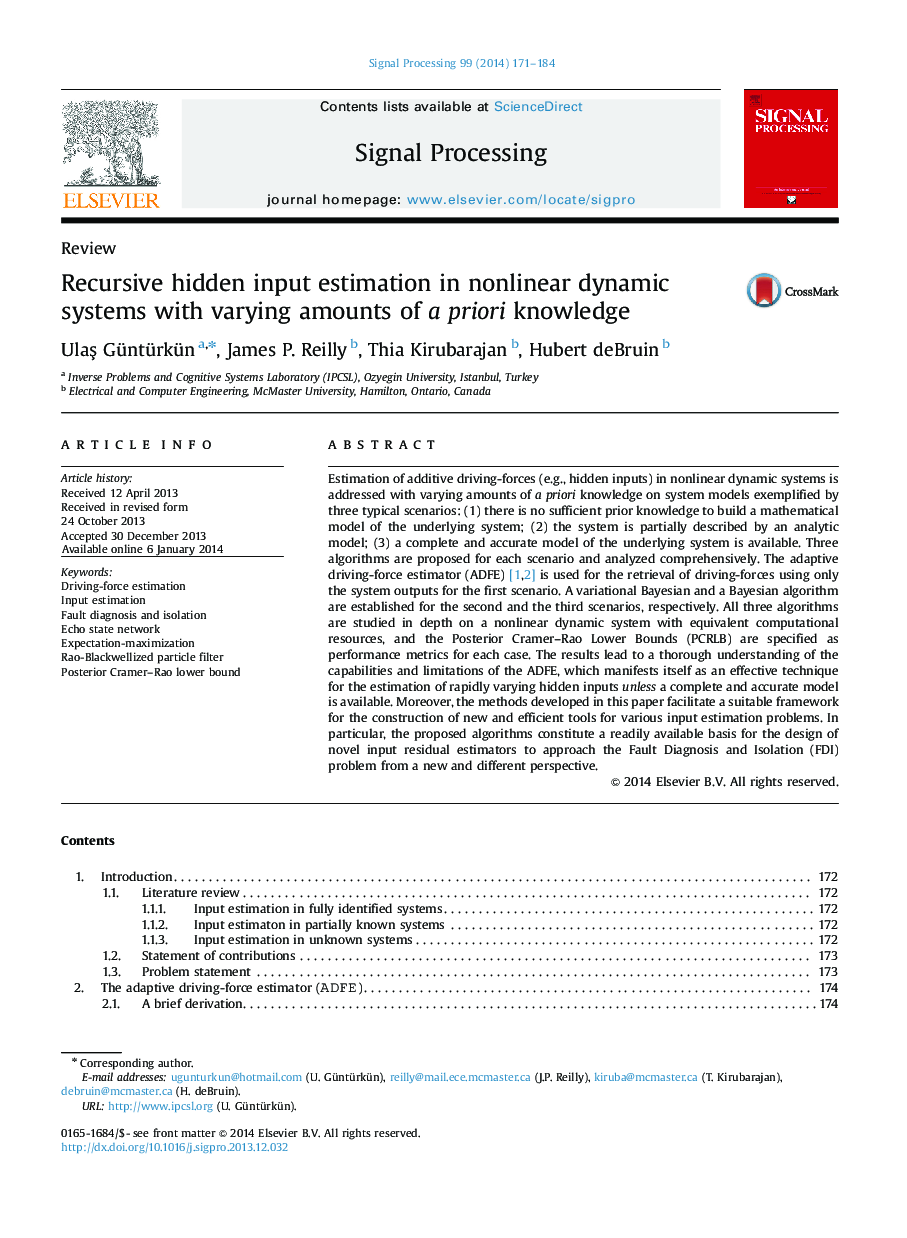| Article ID | Journal | Published Year | Pages | File Type |
|---|---|---|---|---|
| 563872 | Signal Processing | 2014 | 14 Pages |
Estimation of additive driving-forces (e.g., hidden inputs) in nonlinear dynamic systems is addressed with varying amounts of a priori knowledge on system models exemplified by three typical scenarios: (1) there is no sufficient prior knowledge to build a mathematical model of the underlying system; (2) the system is partially described by an analytic model; (3) a complete and accurate model of the underlying system is available. Three algorithms are proposed for each scenario and analyzed comprehensively. The adaptive driving-force estimator (ADFE) [1] and [2] is used for the retrieval of driving-forces using only the system outputs for the first scenario. A variational Bayesian and a Bayesian algorithm are established for the second and the third scenarios, respectively. All three algorithms are studied in depth on a nonlinear dynamic system with equivalent computational resources, and the Posterior Cramer–Rao Lower Bounds (PCRLB) are specified as performance metrics for each case. The results lead to a thorough understanding of the capabilities and limitations of the ADFE, which manifests itself as an effective technique for the estimation of rapidly varying hidden inputs unless a complete and accurate model is available. Moreover, the methods developed in this paper facilitate a suitable framework for the construction of new and efficient tools for various input estimation problems. In particular, the proposed algorithms constitute a readily available basis for the design of novel input residual estimators to approach the Fault Diagnosis and Isolation (FDI) problem from a new and different perspective.
